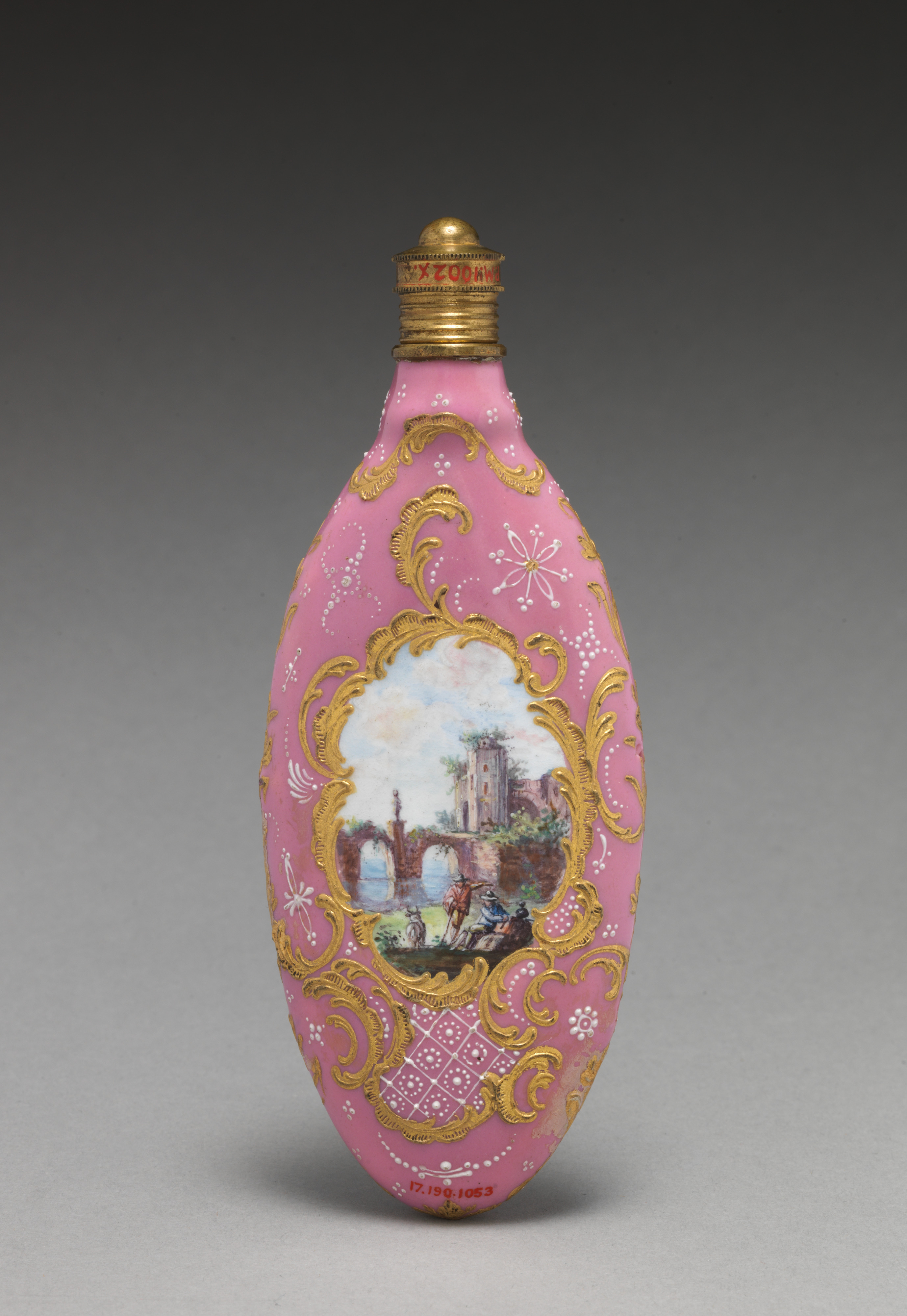Scent bottle
Manufactory Samson and Company
Not on view
Despite its close resemblance to English enamelware, this scent bottle was in fact made by Samson of Paris, a ceramics firm dedicated to producing convincing reproductions.
Small enough to carry in a pocket or attach to a belt, scent bottles (or smelling bottles, as they were referred to in the eighteenth century) held perfumes that could be sniffed throughout the day, either directly from the bottle or when applied to a handkerchief. Strong odors were primarily thought to help govern disordered emotions, though smelling bottles were advertised as a solution to a variety of ailments. As one scent bottle salesman put it in 1785, "Considering the many sudden Disorders we are liable to, no one is really safe without it."
Enameled objects like this one were intended to imitate the lustrous quality of porcelain at more affordable prices. By the middle of the eighteenth century, technological innovations had made it possible to roll copper, instead of the far costlier gold, into very thin sheets. Powdered glass mixed with minerals (to determine the opacity and color of the enamel) would then be applied onto the copper sheets and fired at high temperatures. A design—whether a famous portrait, generic pastoral scene, or floral motif— could be painted on by hand or copied from an engraving through the newly invented process of transfer printing. Many enameled objects combined both methods of decoration and would be refired after the application of each new layer or color.
This image cannot be enlarged, viewed at full screen, or downloaded.
This artwork is meant to be viewed from right to left. Scroll left to view more.



